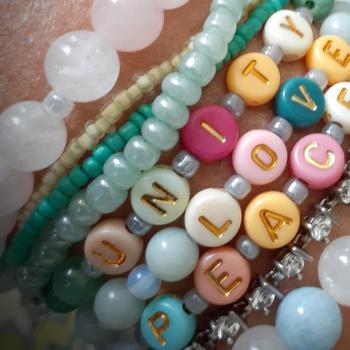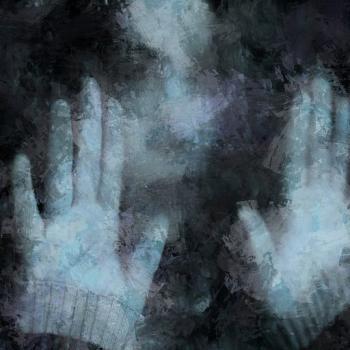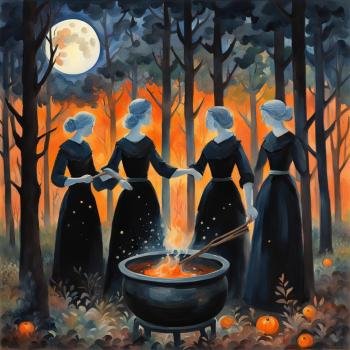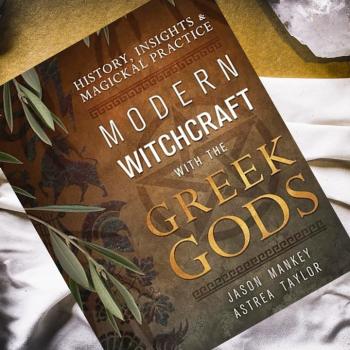Are you Thor, the God of Hammers? That hammer was to help you control your power, to focus it. It was never your source of strength. – Odin, in Thor: Ragnarok.
As I re-watched Thor: Ragnarok a few nights ago, I was once again struck by this pithy line uttered by Odin. The exchange takes place at Thor’s darkest hour, when he and all of Asgard are facing sure defeat at the hands of his deadly cinematic sister, Hela (based on Hel). Stripped of the symbol of his power, the mighty Mjölnir*, Thor is literally brought to his hands and knees by his overwhelming sense of powerlessness. He tells Odin, “I’m not as strong as you,” to which Odin replies, “No…you’re stronger.”
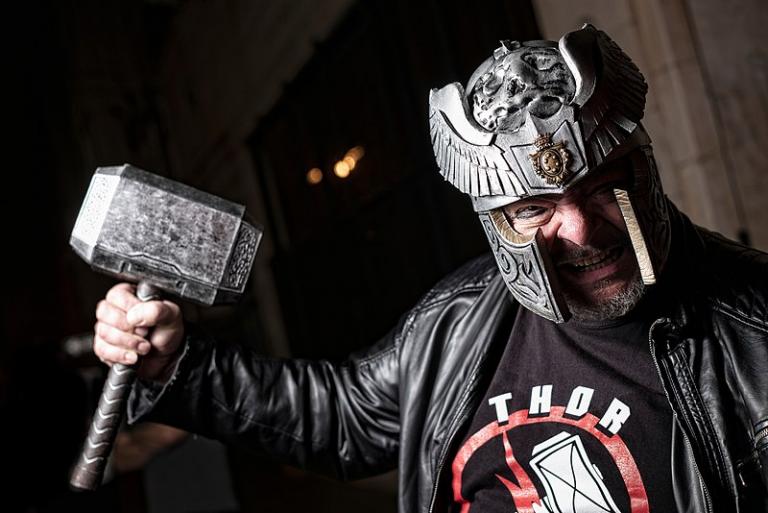
“Are You Thor, the God of Hammers?”
There was a time when I felt I wasn’t witchy enough because I didn’t have all the bits and bobs that scream “WITCH!”. No pentacles, triquetras, besoms, pointy hats, wands—none of it, largely because I was very much in the broom closet while raising children in a conservative part of the country. My husband was—and still is—supportive, but neither of us wanted our school-aged children to suffer any sort of backlash from our culturally right-of-center socio-political environment due to my spiritual path. Their schools were already competitive and judge-y enough without adding a witchy mom into the brew.
So, for years I had nothing to help me focus my power except my own will. Turns out that was a good thing, because it gave me time and space to develop my strengths. One of the most powerful healing spells I ever cast—I literally felt a burst of energy ripping away from my body—was done with nothing more than a stump, a candle, some salt, some water, the moon, and a profound gathering and building of my energy and focus toward that one healing intention.
“That Hammer Was to Help You Control Your Power, to Focus It”
J. Allen Cross writes in his terrific post, No Shame in Budget Brujeria:
Spirit doesn’t care how much money you spent on your supplies, or how your candles were made. Spirit cares about how genuine you are, how in need you are, and how worthy you are. This worthiness is not measured in dollars and cents. That’s earth measurements. A true worker can do more with a twelve-cent birthday candle and a handful of dirt than modern trendy witches can do with a whole shop full of expensive tools and exotic herbs.
Like most other folx, I am easily charmed by Shiny Things, and when we’re on a new spiritual path (or when we’re young on a spiritual path, even after having been on it for years) those Shiny Things can be powerfully seductive. In part that’s because our Western society is all about faster, better, stronger and buy, buy, buy. We’re steeped in a miasma of constant commerce, and even those of us from the Hippie Generation can be subsumed by this pervasive, rampant ethos of rapacious consumerism.
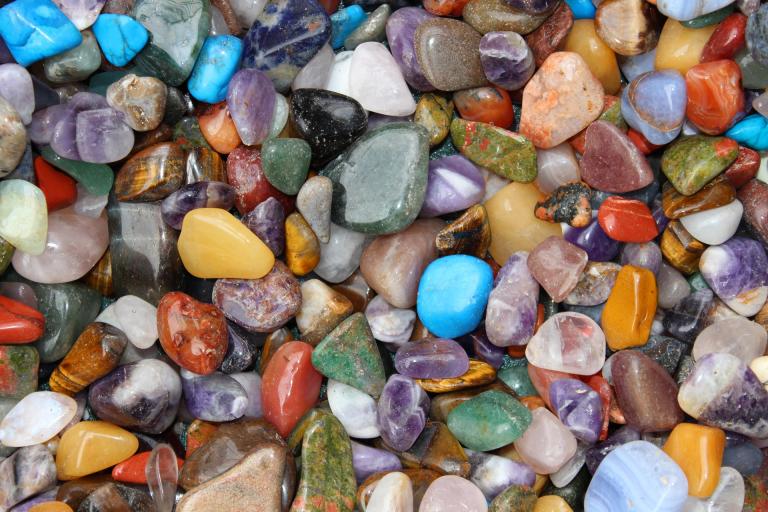
Now, these many years after my child-rearing days, I have all sorts of witchy stuff scattered throughout the house, collected over time from resale shops, garage sales and—occasionally—purchased from small-business owners and crafters such as Fiber Magick Crochet and BroomChick. Still, most of my witchy stuff is what some folx would categorize as wholly mundane.
My staff? A 6’ long dead branch I found on a woodland trail, now decorated with ribbons, wire, beads, yarn and dental floss (clean!) that I had lying around the house. Hanging from it is an old pill bottle that I covered with a peel of birch bark I found on another walk—and inside that bottle are the teeth extracted during my cat’s oral surgery (these are by far the most spendy items; I was certainly not going to let those murderously expensive little teeth go to waste!).
A spirit bag from Pagan Spirit Gathering, some silver thread from the embroidery box, some old brass bells and a tumbled rose quartz also decorate the staff. Total cost? Time, intention, and energy as I crafted the materials I had on hand into something magical. It is by no means professional-looking, but it virtually vibrates with energy. Yet even at that, do I really need my staff to work my magic? Of course not. I’d be sad to lose it, certainly, but no matter how much I love it I don’t really need it to manifest my intentions.
My altar adornments? Turkey feathers from a friend’s wooded back yard. Sea shells collected by my husband’s grandmother. Assorted crystals found at estate sales or received as gifts. Lava rocks from the local hardware store. A black pillar candle and two white tapers. Total cost? Five dollars for the lava rocks, most of which I used to form a semi-circle in front of my outdoor altar, and about five dollars for the candles.
My tools? Sea salt. Moon water. My grandfather’s bone-handled knife. A segment of rope from the PSG Rite of Passage for Young Men. My hair. My sweat. My tears. ME. Total cost? Two dollars for the sea salt, which will supply me for at least a few years.
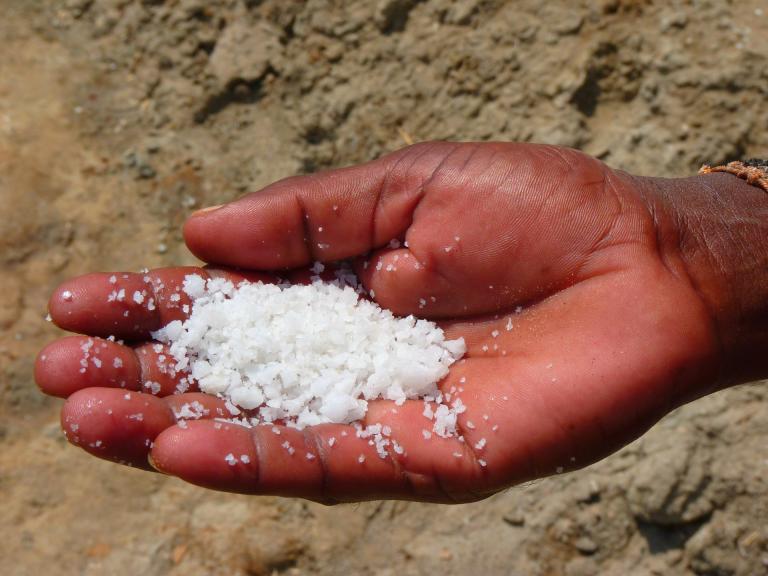
“It Was Never Your Source of Strength”
At a recent Festival workshop, Byron Ballard said something I found very much in alignment with my own way of thinking about the world. Someone at the workshop lamented having to return to the mundane world after having experienced the magical world of the Festival.
Byron responded that there’s really no separation between the magical and the mundane; it’s all the same world. There was, she asserted (and I agree) no reason why folx couldn’t take their experience of the magical Festival world with them when they left for home.
To that I would add that we each have a choice in how we interact with the world around us: either magically or mundanely. The world isn’t made magical because we bless it and declare it to be so; it’s already magical on its own. It’s the way we approach the world that shapes our ability to experience the magic that is already there, all around us.
As witches and pagans, when we attune to the sacred rhythms of planet and universe and lean into those connections, those connections become a source of our strength. Those of us who work with deities find a powerful source of strength in those connections as well, but even so—whether earth-specific or deity-specific—it is our own focused energy to know, to dare, to will and to keep an inner silence, a stillness in which Spirit may be heard, that gives us our strength.
Am I saying get rid of all your witchy stuff? Absolutely not—you can pry my cast iron cauldron out of my cold, dead hands thank you very much. I love that thing. I love all my things. But I’m not in love with all my things, and that’s a crucial difference.

Am I saying my way of witching is the right way and the folx who are more consumer-centric than I am are wrong? Nope. You do you, Witch. No judgement here, although I would gently suggest that you consider purchasing from small independent shops as opposed to nameless, faceless mega-corporations. Lisa Jade’s recent article on consumerism speaks to this issue. Consumerism is one thing; over-consumerism is another. Being intentional about where your money goes and who it supports can be a powerful form of practical magic.
What I am saying is that you are enough—you are more than enough—on your own, with or without the sparkly bits. Your knowledge, your focus, your intention and your deep connection with the sacred—be that nature or deity or both—is enough to manifest some amazing magic. You’re not a witch because you have countless crystals and oodles of pentacles. You’re a witch because that’s who you know yourself to be in your bones, in your soul.
And you’re more than strong enough to do the magic, with or without the sparklies.
—
*Please note that “[a]lthough its traditional origins are non-racist, and although most Asatruers today are not racist, the Thor’s Hammer symbol has been appropriated by neo-Nazis and other white supremacists, especially those who practice racist or white supremacist versions of neo-Norse beliefs under the guise of Odinism or Wotanism.” Please also not that “[d]espite the widespread use of the Thor’s Hammer symbol by white supremacists, the fact that it is an important symbol for non-racist Norse pagans means that one should never assume that the Thor’s Hammer appearing by itself necessarily denotes racism or white supremacy. Instead, one should carefully judge the symbol in the context in which it appears.” (Quoted from the ADL website)
And finally, here’s a quick video for you, simply because who doesn’t love watching Viking kittehs rampaging across the waters to Led Zepplin’s Immigrant Song?








